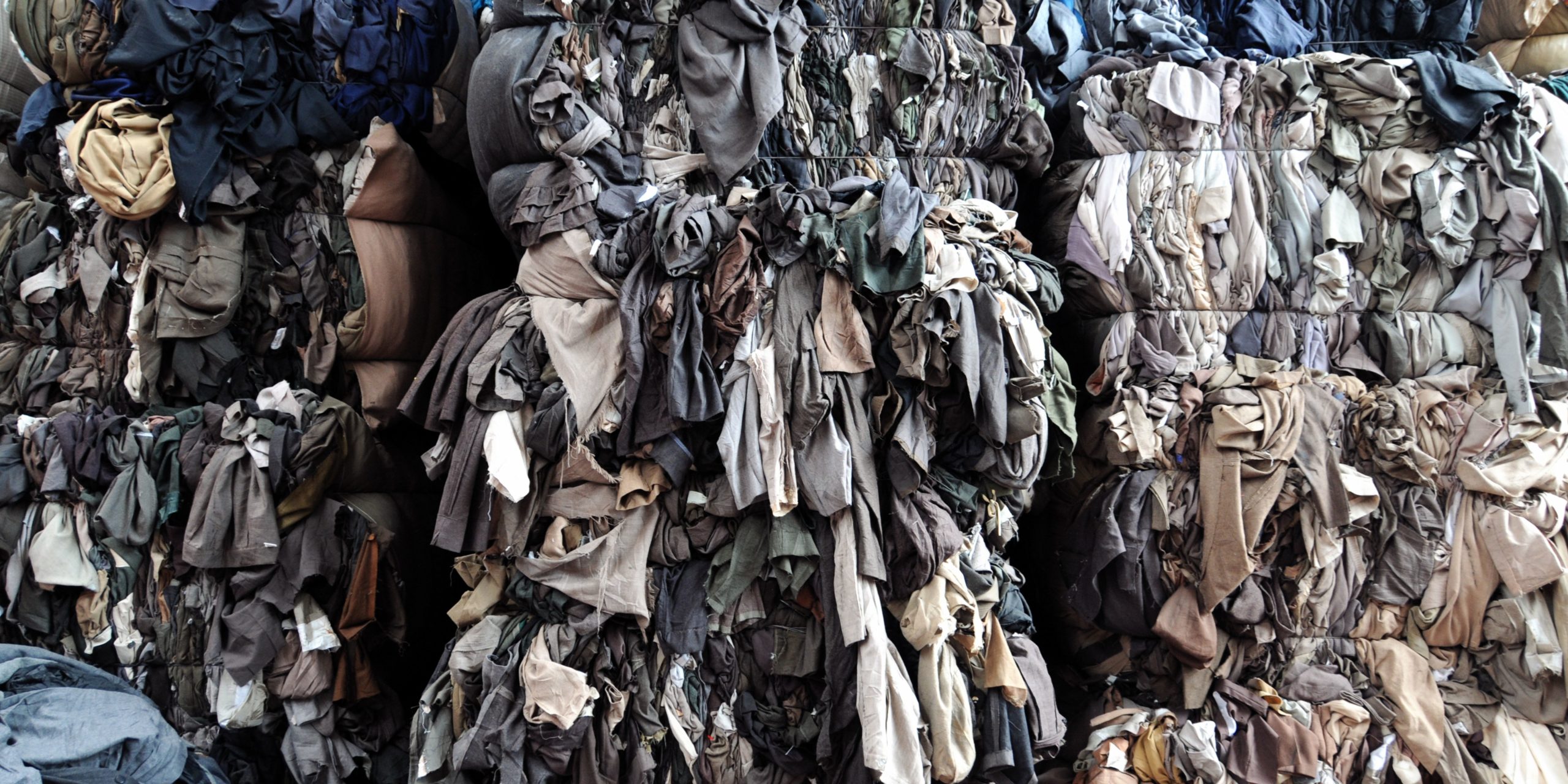What is fast fashion?
Fast fashion is a model of clothing production and consumption based on mass production, at low cost and in large quantities. This allows the major brands to renew their collections at a frenetic pace, 4 times a year instead of 2 collections previously. In this way, they are responding to ever-increasing consumer demand for cheap, fashionable products.
This phenomenon is made possible by mass production in countries with low labour costs and the use of cheap synthetic fibres such as polyester. However, it also has serious consequences for the environment.
The impact of fast fashion on the environment
The fast fashion industry is responsible for 20% of global water pollution, largely due to dyes and chemical treatments that are dumped into rivers and oceans without proper treatment.
This industry is based on fast, cheap production, which leads to over-consumption of natural resources (water, cotton, oil for synthetic fibres). For example, growing cotton requires huge quantities of water – 2,700 litres for one T-shirt – not to mention the pesticides and other chemicals used, which pollute the soil and waterways.
Production-related pollution
Mass production of clothing generates a great deal of pollution (chemical, plastic and CO2). The factories that make these clothes dump large quantities of chemicals into rivers, and the dyes used to colour the fabrics contain toxic substances that are sometimes banned in some countries. The production of synthetic fibres, such as polyester, is responsible for greenhouse gas emissions.
Plastic pollution
Clothes made from polyester, acrylic or nylon are a major source of plastic pollution because, when washed, these fabrics release microplastics into the water and end up contaminating the oceans and marine ecosystems. Marine animals can ingest them, entering the food chain of which we are a part.
Textile waste management
Fast fashion encourages rapid consumption and the constant renewal of clothing. Cheap clothes are often of poor quality and quickly end up in the bin. Worldwide, 92 million tonnes of textile waste are generated, much of it from polyester, nylon, acrylic and elastane clothing, which are petroleum-based materials that take hundreds of years to decompose, releasing microplastics. The rest ends up in landfill or is incinerated, which contributes to the accumulation of waste.
Greenhouse gas emissions
The production of fast-fashion clothing generates a large amount of CO2 – 10% of global CO2 emissions – particularly during manufacture, transport, storage and distribution. This is because most textiles are made from synthetic fibres such as polyester, which are derived from petroleum. The chemical dyes used to colour clothes also consume a lot of energy. The dyeing of clothes alone accounts for 20% of the textile sector’s emissions. Once manufactured, the transport of clothes is a source of pollution, as they travel thousands of kilometres because they are produced in developing countries. Emissions from the textile industry continue to rise as a result of massive clothing production and global supply chains.
Unfortunately, gas emissions and pollution of rivers and oceans are affecting biodiversity and the health of ecosystems.
What are the Fast Fashion brands?
Some of the best known are: Zara, H&M, Primark, Shein, Bershka, Pull & Bear, Mango, Stradivarius, Forever 21, Uniqlo, ASOS.
These brands represent the very essence of fast fashion, where rapid production and low prices shape their business model.
The Chinese brand Shein is attracting fewer and fewer people as consumers or potential future consumers become more aware of its impact on the environment.
How often do brands renew their collections?
The problem with fast fashion brands is that they renew their collections extremely quickly, every week or even every day.
Shein: it adds thousands of new models a day thanks to its ultra-fast production system.
Zara: it renews every week with the arrival of new pieces, and the entire collection is renewed every 2 weeks or so.
H&M: introduces new pieces several times a month.
Bershka, Pull & Bear and Stradiviarus: these brands work like Zara, adding new pieces every week.
ASOS, Boohoo, PrettyLittleThing: these are online platforms that offer hundreds of new items every day.
Forever21, Primark: they have new trends on the shelves very frequently, although rotation is slower than at Zara.
Why is this renewal so rapid?
This ultra-rapid renewal of collections and items creates a sense of urgency among consumers, who, fearing that the item will disappear, will buy it quickly. What’s more, the more new items there are, the more likely it is that customers will come back to the shop or visit the websites to find new clothes. By buying new clothes, people can keep up with the trends seen on social networks.
The textile industry, a real environmental disaster
The fashion industry is one of the most polluting in the world, and the figures prove it. Producing a single cotton T-shirt requires 2,700 litres of water, the equivalent of what a person drinks in 2 and a half years. Every year, 92 million tonnes of textile waste are generated, and a lorry full of clothes is thrown away every second. The environmental impact doesn’t stop there: fashion accounts for 10% of global CO₂ emissions, exceeding air and sea transport combined. Not to mention the massive use of synthetic fibres such as polyester, which releases microplastics responsible for 35% of plastic pollution in the oceans. These alarming figures show the urgent need to adopt more responsible consumption and rethink our relationship with clothes.
What are the alternatives to fast fashion?
Many initiatives have been launched to counter the negative effects of fast fashion, including more sustainable alternatives. These include
– Ethical and sustainable fashion
With many brands advocating environmentally-friendly production practices, using natural, recycled or fair-trade raw materials, and reducing their carbon footprint.
– Buying second-hand
The second-hand market is booming, with platforms like Vinted allowing consumers to buy second-hand clothes, reducing demand for new production.
– Recycling and repair
Companies and organisations have started recycling clothes, and more and more consumers are opting to repair their clothes instead of throwing them away.
Faced with the disastrous impact of fast fashion on the environment, we urgently need to rethink the way we consume fashion. The alarming figures leave no doubt: current textile production is unsustainable for the planet. But there are solutions. Favouring second-hand clothes, supporting eco-responsible brands and learning how to repair and recycle clothes are all practical ways of reducing our ecological footprint. Every purchase is a vote for tomorrow’s world: choosing more ethical and sustainable fashion means acting for a better future.

**Sources**
Bloomberg.com – Fashion industry environmental impact
Earth.org – Statistics about fast fashion waste
Earth.org – The Environmental impact of Fast Fashion, explained
Wikipedia.org – Human impact on the environment
En mode climat – Fast fashion ou growth fashion













